By Frank Iannamico
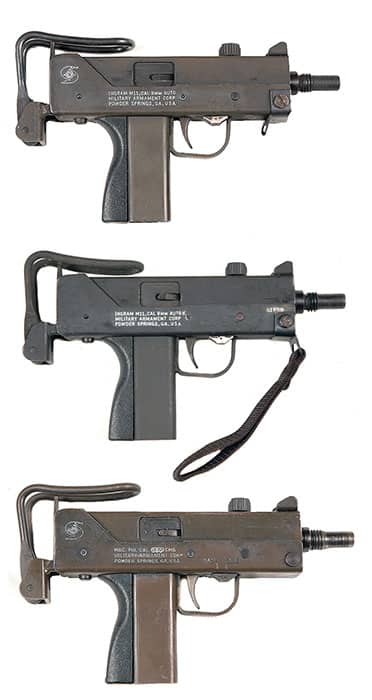
“Entry level” Submachine Gun Presents Many Versions to Choose From
The MAC submachine guns are considered by many as an inexpensive “entry level” choice. However, inexpensive is hardly a word that can be used to describe any transferable machine gun today.
MACs, because of their high cyclic rate, are thought of as bullet hoses that are able to consume large quantities of ammunition in a very short period of time. Being a spray and pray type of submachine gun, the diminutive weapons are often viewed as merely a novelty item. Unfortunately, the novelty of quickly expending hundreds of rounds of ammunition wears off quickly. The time spent loading the magazines can also become wearying. However, there are a few folks that find dumping a magazine from a fast-cycling MAC an exhilarating experience.
Various devices and components for reducing the MAC’s cyclic rate have been conceived since MACs hit the market in the 1970s. The most successful have been those of Lage Manufacturing LLC. Not only have Lage products made the MACs more ergonomic and tamed their cyclic rate, they have also made MACs very popular.
Lage’s MAC products have been covered in previous SAR articles. This piece is to review what is available to those interested in adding a MAC to their collection.
In addition to the original MACs made in Powder Springs and Marietta, Georgia, there have been several other companies that have manufactured the basic design since the original Military Armament Corporation went bankrupt in 1976.
The MAC submachine guns are usually identified by the address or addresses marked on their lower receivers:
Military Armament Corp Powder Springs, GA
Military Armament Corp Marietta, GA
Military Armament Corp Powder Springs / RPB Industries Inc., Atlanta, GA (double stamp)
Military Armament Corp Marietta, GA / RPB Industries Inc., Atlanta, GA (double stamp)
RPB Industries Inc., Atlanta, GA
Military Armament Corp, Stephenville, Texas
SWD Incorporated, Atlanta, GA
Military Armament Corp, Stephenville, Texas / SWD Incorporated, Atlanta, GA
Jersey Arms Works Inc., Westmont, NJ
When shopping for a MAC, there are several caliber choices.
The .45 Caliber Model 10
The MAC in .45 caliber has several features that would make this variant an attractive choice. The .45 caliber MAC was designed by the Military Armament Corporation to use surplus 30-round GI M3 submachine gun “grease gun” magazines, which were plentiful and inexpensive. However, it was designed to accept only M3 magazines that had been modified at the MAC factory. The .45 caliber MAC submachine gun has several advantages over its 9mm counterpart. If a suppressor is used, 230-grain .45 caliber ammunition is inherently subsonic, so no special ammunition is needed to prevent the “crack” generated when supersonic ammo exceeds the speed of sound. According to MAC literature, the minimum cyclic rate is 950 rounds per minute. Its weight with a loaded 30-round magazine is 8.4 pounds.
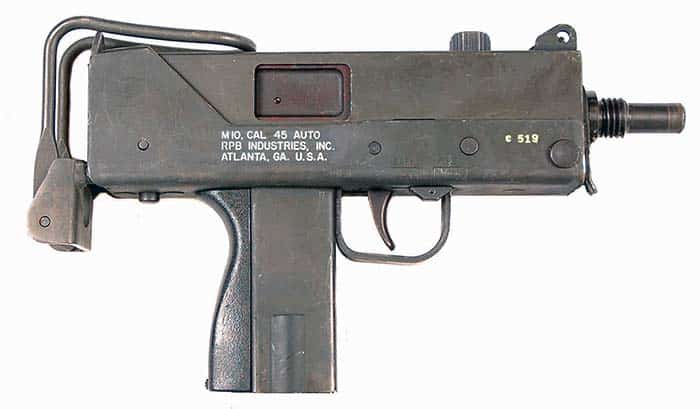
The .45 caliber MAC, because of its large magazine well, can be easily converted to fire 9mm ammunition if desired. Conversion kits are available, consisting of a magazine well adapter and a 9mm upper receiver and bolt that is easily installed or removed. The 9mm magazines are the same as those used for the 9mm Model 10. However, a MAC submachine gun converted to 9mm may not always be 100 percent reliable.
As mentioned above, the .45 MAC uses plentiful and relatively inexpensive surplus M3 magazines. An aftermarket magazine catch, which allows both MAC-modified and unmodified M3 magazines to be utilized, is available commercially.
The Downside
Caliber .45 ammunition is more expensive than 9mm and makes the loaded MAC slightly heavier. In full-auto fire, the .45 is slightly harder to control than the 9mm model. The double-stack, single-feed magazines are hard to load to capacity by hand, a magazine loader makes the task much easier. The factory-supplied loader is an original M3 GI issue with a MAC logo engraved on it.
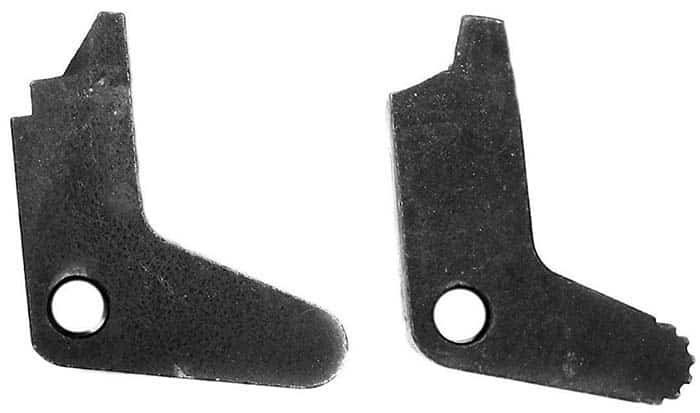
The 9mm Model 10
Also manufactured was the MAC 10 in 9mm. As with the .45 caliber model, existing magazines were chosen instead of designing a new one. The 32-round magazine was that originally made for the Walther MPL submachine gun and, as with the .45 M3 magazine, was modified to fit. The Walther/MAC magazines are easy to load because of their double-stack, double-feed design. The 9mm ammunition is generally less expensive than the .45 caliber. The 9mm MAC is slightly easier to manage during full-automatic operation. According to MAC literature, the cyclic rate of the 9mm is the same as that of the .45 caliber model, a minimum of 950 rounds per minute. A loaded 9mm MAC is approximately three-quarters of a pound lighter than its .45 caliber counterpart; its weight with a loaded 32-round magazine is 7.62 pounds.
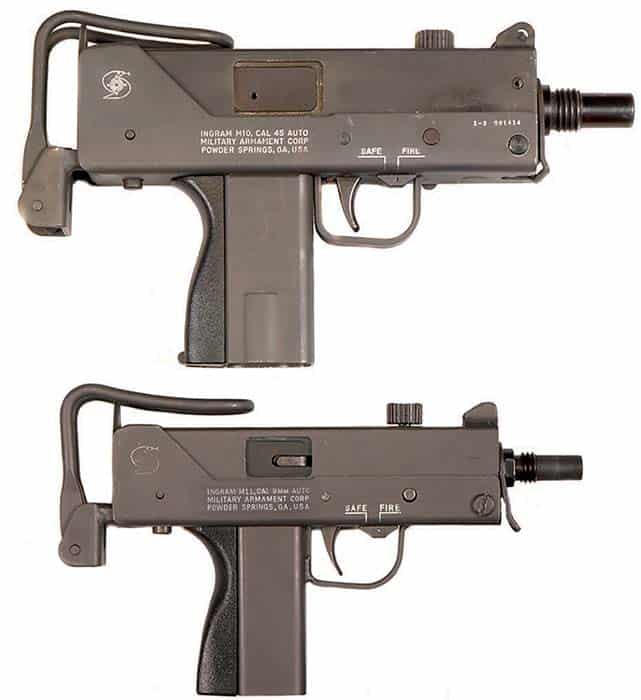
The Downside
The 9mm Walther magazines are expensive. There are a number of aftermarket magazines; some work in certain guns, some do not. For the best reliability, the Walther magazines are recommended.
If you use a suppressor with a 9mm MAC, subsonic 9mm ammunition is needed to prevent the sonic “crack.”
The 9mm MAC cannot be converted to .45, as the magazine well is too small. To remove the problem of the expensive 9mm magazines, some owners have opted to have their MAC submachine guns converted to use less expensive magazines.
UZI Magazine Conversions
To address the shortage and expense of original Walther magazines for the 9mm Model 10, the UZI magazine well conversion was conceived. The conversion offered the M10?/9mm owner the ability to use the plentiful and inexpensive double-stack, double-feed UZI magazines that are available in 20-, 25- and 32-round configurations. The downside of the conversion is that it requires the original magazine well to be cut off, the UZI well to be welded onto the receiver and a refinish to be performed.
The Grease Gun Magazine Conversion
Another option for owners of Ingram M10?/9mm submachine guns to address the magazine shortage/expense problem is to convert their weapons to .45 caliber with an M3 “grease gun” magazine well conversion. To complete the conversion, a .45 caliber upper receiver and bolt assembly are needed. This conversion permanently converts a 9mm Model 10 to a .45 caliber configuration that uses inexpensive “grease gun” magazines.
The downside to either conversion is the possibility of the weapon losing any future collector appeal.
After MAC declared bankruptcy, RPB began manufacturing Model 10 and Model 11 submachine guns and associated accessories. RPB subcontracted their magazine work out to Component Metal Products during this period, who produced 40- and 10-round magazines for the .45 caliber Model 10 and M11 magazines.
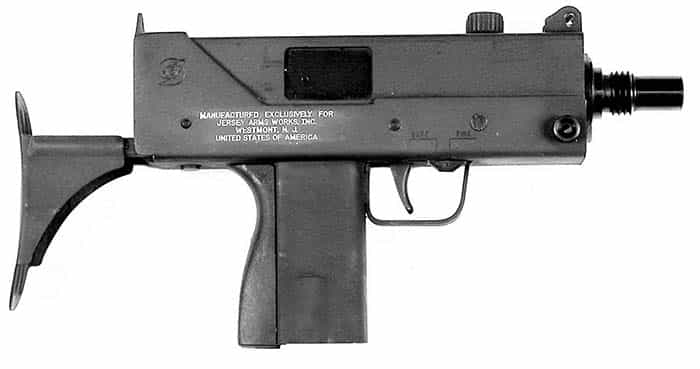
The M11 .380 Caliber MAC
Gordon Ingram developed another variation of his basic design, which was even more compact than the original Model 10. The new .380 caliber submachine gun was chronologically designated the Ingram Model 11 or simply the M11. Weighing in at 4.62 pounds with a loaded 32-round magazine, the new Model 11 was nearly half the weight of the loaded .45 caliber Model 10. The M11 has a very fast cyclic rate of 1,200 to 1,600 rounds per minute.
Early Model 11 .380 caliber submachine guns manufactured at the Military Armament Corporation plant were marked “9MM AUTO.” After a brief period, a letter “K” suffix was added to designate it as “Kurz” or “short.” Still, the “9MM” markings caused confusion. To finally address the caliber confusion situation, subsequent production M11s were marked “.380 CAL,” and many of the unsold guns were remarked.
Like the Model 10, there are several variations of the Model 11. The primary differences include the size of the magazine well and the magazines. Powder Springs, Marietta and RPB M11s and RPB M11A1 submachine guns have small magazine wells for steel magazines. The SWD M11A1s have a larger magazine well designed for the Zytel plastic magazines used in SWD’s M11/NINE.
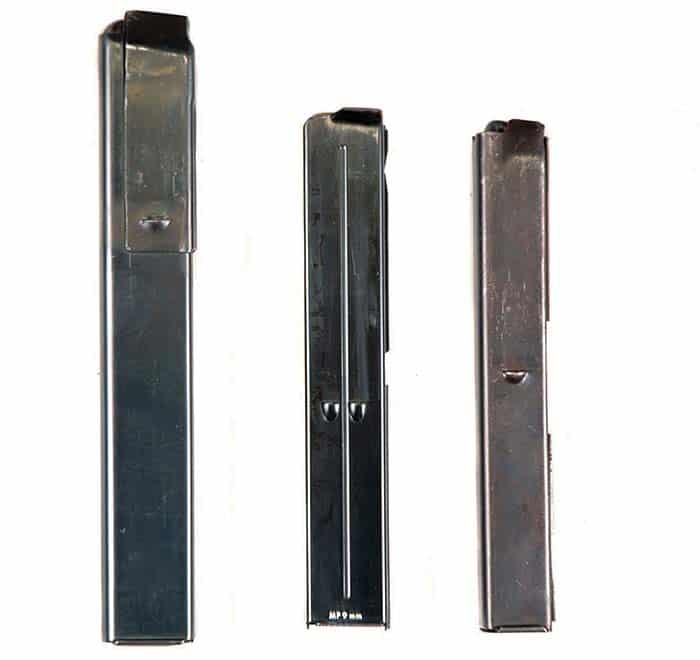
Model 11/.380 Magazines
The original .380 caliber Ingram Model 11 manufactured by the Military Armament Corporation used double-stack, single-feed steel magazines. The followers of original magazines were also made of steel. Most of the original magazines were marked on the front edge of the magazine body with the Cobray snake logo, with the word “MAC” on top and a number underneath. The M11/.380 magazines were made in 16- and 32-round configurations and have a blue finish. Like most single-feed designs, the M11/.380 magazines are difficult to load without a loading tool. A magazine loader was available that was a scaled-down version of the .45 caliber M3 grease gun magazine loader. Original MAC-era magazines for the M11/.380 can be difficult to locate and are expensive.
Most of the M11/.380 magazines manufactured during the RPB/SWD era were made by subcontractor Component Metal Products. The CMP magazines were marked with only a Cobray snake logo or a stylized CMP logo. The magazines were made in 16- and 32-round configurations.
Other aftermarket magazines have been manufactured, but their quality and reliability vary, particularly when considered for use in a submachine gun. Recently manufactured aftermarket magazines often have cartridge followers made of plastic. Because not many Model 11 submachine guns were manufactured, there are fewer magazine options than for the Model 10.
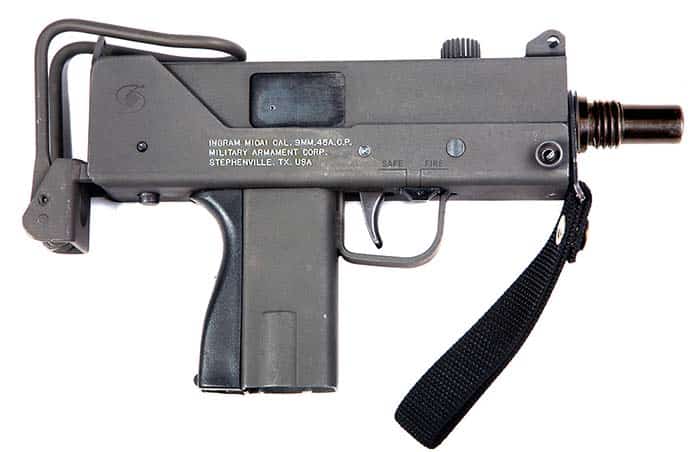
The SWD M11/NINE
The M11/NINE was a basic MAC design manufactured by SWD during the 1980s. The 9mm SWD M11/NINE has often been incorrectly referred to as a MAC 11. This is technically incorrect, because MAC (Military Armament Corporation) never produced them. The M11/NINE has become one of the most popular “MAC-type” submachine guns, due to its small size and huge array of aftermarket upgrades.
One of the drawbacks of the M11/NINE (and the SWD .380 caliber M11A1) is its problematic “space age” Zytel magazines. However, that problem has been resolved by some excellent aftermarket magazines, such as the Shockwave ZMAG.
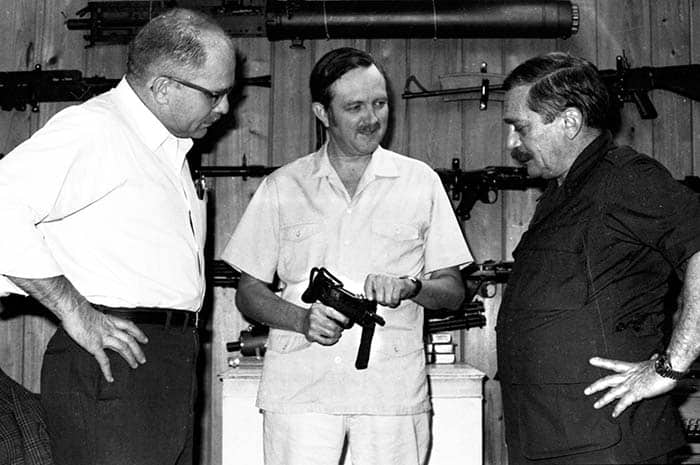
RECOMMENDED READING
THE MAC MAN: Gordon B. Ingram and His Submachine Guns
Chipotle Publishing, LLC
www.smallarmsreview.com
| This article first appeared in Small Arms Review V22N5 (May 2018) |












